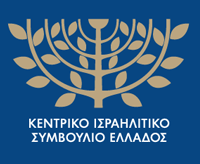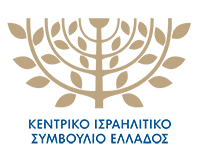H ISRAELI COMMUNITY OF THESSALONIKI
HISTORICAL DATA
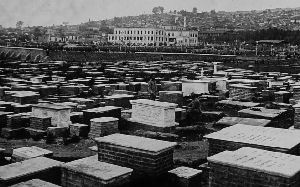
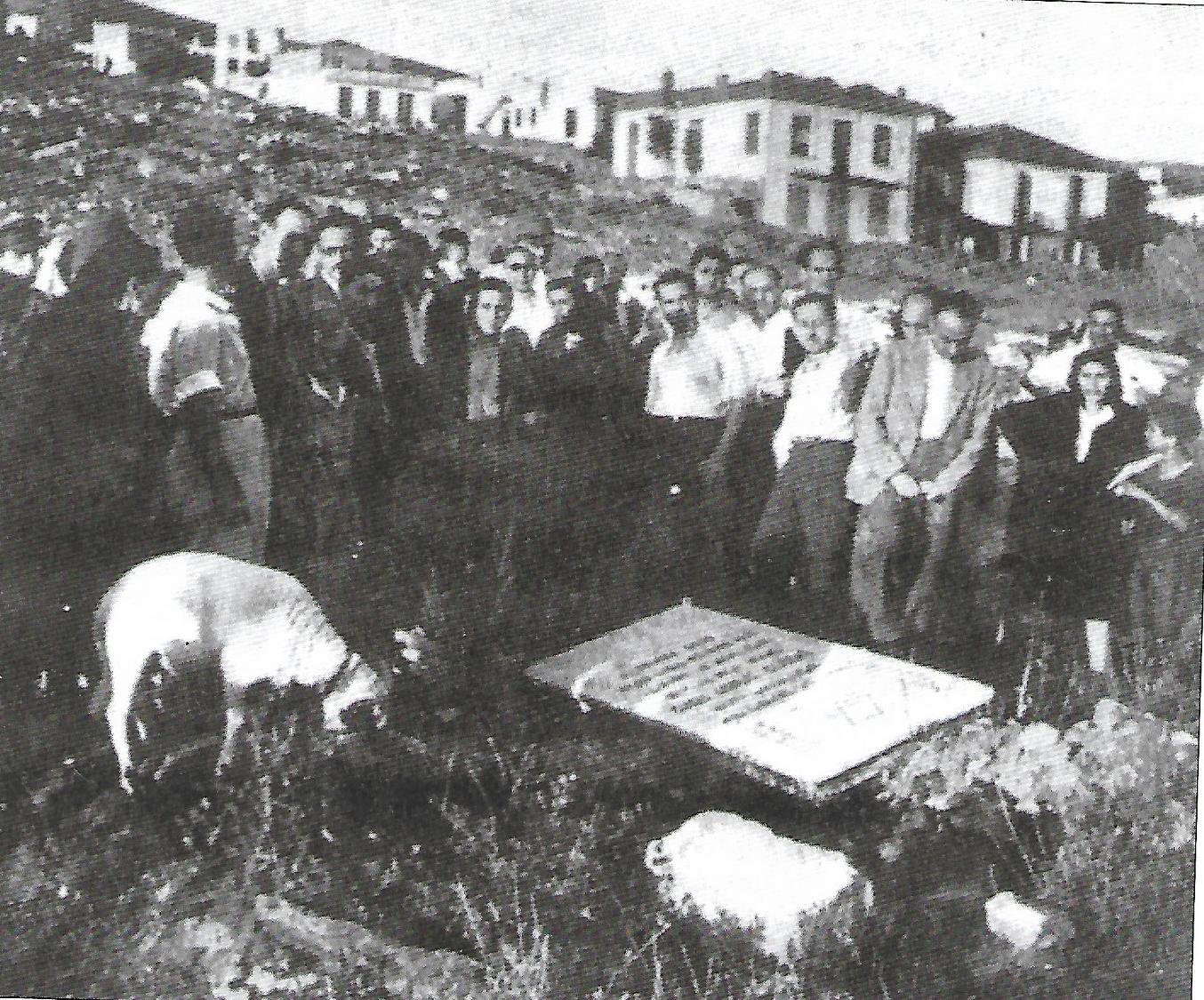 There are no clear indications of the settlement of the first Jews in Thessaloniki, who are thought to have arrived around 140 BC, coming from Alexandria, Egypt. The members of this Community, the so-called "Romaniotes", had adopted the Greek language while simultaneously preserving several elements of Hebrew or Aramaic origin, as well as the Hebrew script. The Apostle Paul preached in their synagogue on 3 consecutive Saturdays, when he visited the city around 50 AD.
There are no clear indications of the settlement of the first Jews in Thessaloniki, who are thought to have arrived around 140 BC, coming from Alexandria, Egypt. The members of this Community, the so-called "Romaniotes", had adopted the Greek language while simultaneously preserving several elements of Hebrew or Aramaic origin, as well as the Hebrew script. The Apostle Paul preached in their synagogue on 3 consecutive Saturdays, when he visited the city around 50 AD.
From time to time Jews from all parts of Europe settled in Thessaloniki establishing their own communities and their own synagogues. A decisive event in the history not only of the Jewish Community but also of the city was the settlement of 15.000-20.000 Spanish Jews, the so-called Sephardim, who in 1492, expelled from their homeland following a decree of the "Catholic Kings" Ferdinand and Isabella, found asylum in Thessaloniki by granting in the city a special physiognomy.
With their arrival, the desolate state will wake up from its slumber and once again become a first-line economic center, just like in the Roman and Byzantine years. Thessaloniki will develop into a great center of theological studies and will highlight prominent personalities. For this reason, in 1537, Samuel Uscue, a Jewish poet from Ferrara called her "Mother of Israel".
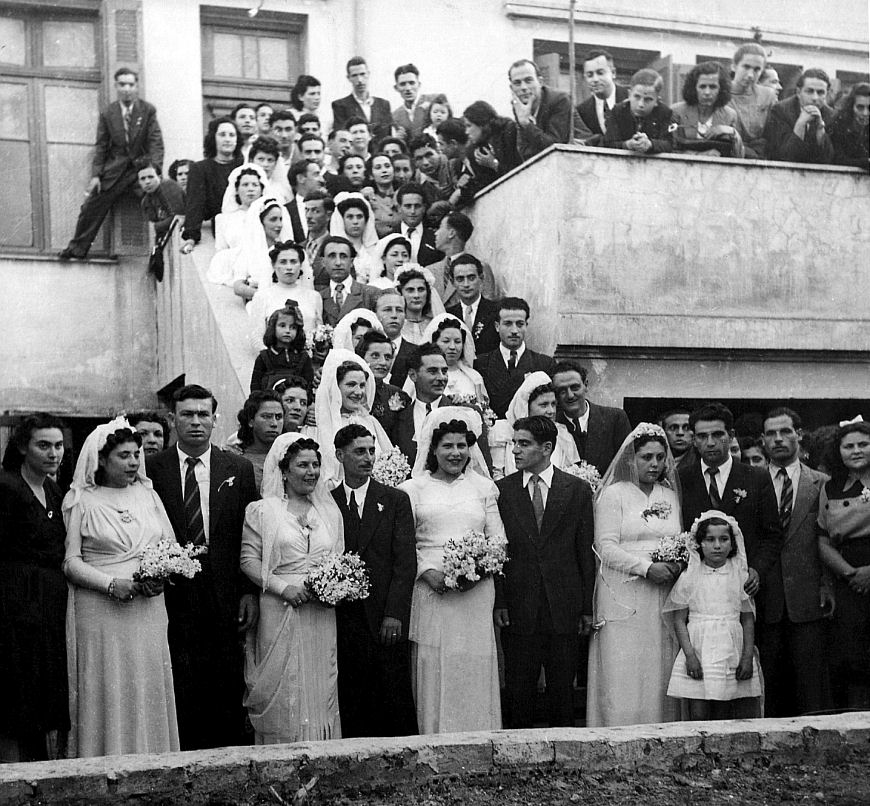 The most defining event for the Jewish community of the 17th century was the appearance of the pseudo-messiah Sabetai Tsvi from Smyrna. At first, he was treated very well and preached in the Shalom synagogue. But when he claimed to be the true Messiah, he was expelled from the city according to the decision of the most important rabbis of the city. Later, he converted to Islam and 13 years after his death, in 1683, a group of his followers – about 300 Jewish families – also converted to Islam. This sect was called "Donme" (Turkish for "apostate") and their religious center was in Thessaloniki, from where they spread to Constantinople and other places. The passage of Sabetai Tzvi from Thessaloniki and the defection that followed caused an uproar among the Jews of Thessaloniki so the Community felt the need to be united to face similar threats
The most defining event for the Jewish community of the 17th century was the appearance of the pseudo-messiah Sabetai Tsvi from Smyrna. At first, he was treated very well and preached in the Shalom synagogue. But when he claimed to be the true Messiah, he was expelled from the city according to the decision of the most important rabbis of the city. Later, he converted to Islam and 13 years after his death, in 1683, a group of his followers – about 300 Jewish families – also converted to Islam. This sect was called "Donme" (Turkish for "apostate") and their religious center was in Thessaloniki, from where they spread to Constantinople and other places. The passage of Sabetai Tzvi from Thessaloniki and the defection that followed caused an uproar among the Jews of Thessaloniki so the Community felt the need to be united to face similar threats
The renaissance will come in the middle of the 19thth century with the shift towards western standards, which is accompanied by economic well-being in the wake of the European enlightenment and the industrial revolution. Towards the end of the 19thth century the Jews hold the most and most important commercial houses of the city and take the lead in its industrial development. Their population exceeds 70.000 souls, i.e. 50% of the total population of the city. The Jewish community maintains a number of important charitable institutions (orphanages, nursing home, Hirsch hospital, mental asylum), dozens of schools and settlements. Many newspapers are also in circulation. In 1909, the socialist labor federation, the well-known "Federation" led by Abraham Benaroya, was born out of the numerous Jewish working class.
On October 26, 1912, Thessaloniki is Greek again. The Greek authorities promise full equality for the Jews. In 1920, with the law 2456, the Jewish Community of Thessaloniki was recognized as an N.P.D.D.. and thus began the new period of its integration into the Greek state. The fire of 1917 would be a crushing blow, as 53.737 Jews were left homeless and almost all synagogues, and charitable institutions were destroyed. Thus, many Jews will emigrate abroad during the interwar period and especially after the sad event of the burning of the Campbell settlement by the E.E.E. organization. (1931). Despite this, the Jews of Thessaloniki numbered around 1940 souls in 50.000. They live in harmony with their Christian fellow citizens and fully perform their duty towards their country in the war of 1940-41.
The enslavement of Greece to the Axis powers will mark the beginning of the end. The Germans occupy Thessaloniki on 9/4/1941 and impose the first anti-Jewish measures, such as banning Jews from entering cafes, restaurants, pastry shops, etc. On 11/7/1942, Jewish men aged 18-45 are required to come to the Freedom Square after suffering indescribable tortures and humiliations, they are led to forced labour. The Community is forced to pay the Germans a ransom of 2,5 billion. Dr. to release them. In December 1942 the Germans looted the flourishing Jewish businesses. In the same month, the ancient Jewish cemetery, which occupied an area of 300.000 square meters, in the area of the current University Campus, was completely destroyed.
From February 1943, Jews are forced to distinguish themselves by wearing the yellow star and their residences are restricted to only certain districts (ghettos). On March 15, the first train bound for the Auschwitz and Birkenau death camps leaves Thessaloniki. A total of nineteen expeditions, departing one after the other, will transport all the Jews of Thessaloniki to the places of their martyrdom within a few weeks. Unfortunately, despite the honorable efforts of the highest Christian clergy, senior civil servants, some units of the National Resistance and mainly individual citizens, 96% of the Jewish Community of Thessaloniki was exterminated
THE ISRAELI COMMUNITY OF THESSALONIKI TODAY
Today, more than 60 years after the irreparable destruction, the Jewish Community of Thessaloniki maintains three synagogues, a community center where speech and art events are organized, a nursing home, a primary school, a choir, a museum and a Spanish-Hebrew language center. In 1983 the Community was honored by the Academy of Athens because it erected the "House of Greece" at the University of Jerusalem at its own expense. In 1986, she was also honored by the Municipality of Thessaloniki for her continuous and multifaceted contribution to the economic, social and cultural life of the city.
monuments
Jewish Martyrs Square: In 1986 the Municipality of Thessaloniki also dedicated a square to the memory of the victims of the Holocaust. Jewish Martyrs Square is located on Papanastasiou Street between Priamou and M. Mitsaki Streets.
Holocaust Memorial (Photo):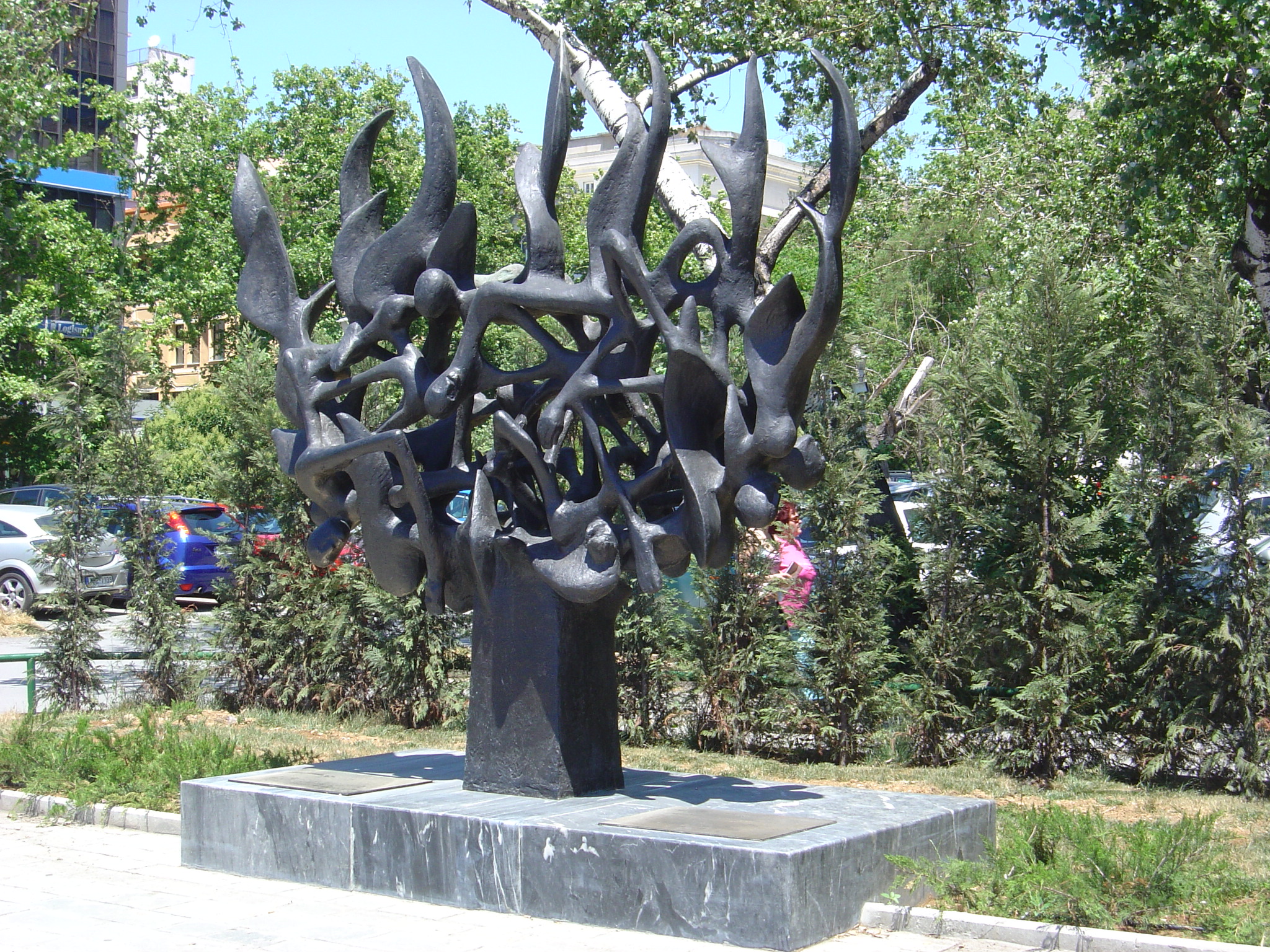
1940-41 War Fallen Memorial: On October 27, 2003, in a brilliant ceremony, in the presence of the President of the Republic and other personalities from the political world, a monument dedicated by the Israelite Community of Thessaloniki to the Greek Jews who fell for their country in the war was unveiled at the Cemetery of I.K.T. of 40 – 41.
Plaque at the Old Railway Station: On 25/4/2004, in the presence of representatives of the political world and the city authorities, the unveiling of a dedication plaque at the Old Railway Station, dedicated to the Jews of Thessaloniki displaced by the Nazis.
Bust of Colonel M. Frizis: On October 24, 2002, in a special ceremony in collaboration with the 8rd Army Corps and the Ministry of National Defense, the bones of Colonel Mordokai Frizis, found in Albania, were buried in the Israeli Cemetery. On June 2007, XNUMX, the unveiling of the bust of Colonel Mordochaios Frizis took place in an event organized by the Municipality of Thessaloniki, the Hellenic Expatriate Association, the Central Jewish Council of Greece and the Jewish Community of Thessaloniki. The bust is located in the park bounded by streets Al. Papanastasiou, K. Karamanli and Kleanthus.
Votive Plaque at the French Institute of Thessaloniki: On 11/5/2003 the unveiling of a votive plaque took place at the French Institute of Thessaloniki (2 Stratou AvenueΑ) in memory of the Jewish students and graduates of the French School of Thessaloniki who perished in the Holocaust.
Monument at Aristotle University γabout the old Jewish cemetery: In November 2014, a monument was inaugurated on the premises of the Aristotle University of Thessaloniki in memory of the destroyed old Jewish cemetery, which before the war covered almost the entire area of the current University Campus.
The cemetery, with its approximately 300.000 graves, was organized in 1492 by the Sephardim who arrived in Thessaloniki from the Iberian peninsula. It also included older tombs dating from the Hellenistic period. The cemetery, which extended over an area of 324.000 sq.m. outside the eastern walls of Thessaloniki, it was considered the largest and oldest Jewish necropolis in the Mediterranean.
In the area of the monument, the following text is inscribed in five languages (Greek, Hebrew, Spanish, French and English) on an equal number of marble slabs, together with information about the history of the cemetery:
"The Aristotle University of Thessaloniki under the rectorship of Ioannis Mylopoulos and the Israelite Community of Thessaloniki erected this monument in memory of the old Jewish cemetery, which was located in this place for centuries until its destruction in 1942 by the Nazi conquerors and their collaborators. Let the memory of the victims of the Holocaust remain forever. June 2014".
The modest monument consists of a bronze seven-light lamp and a composition with broken marble slabs from the gathered graves bearing the symbols of the Jews (Star of David, etc.). The monument, located next to the Observatory building, is the work of the architect Kon. Lentari.
Bust of Allatin: In July 2020, the bust of Moses Allatini was placed in the gardens of Villa Allatini, where today the Region of Central Macedonia is based. The inauguration took place in the presence of the descendant of the family and donor of the bust Laurent Dassault.
Memorial Stones, STOLPERSTEINE: The "Memorial Stones" known internationally as "Stolpersteine" are concrete cubes, measuring 10X10 cm, bearing a brass plate on which is written the name, date of birth and date of death of people persecuted or exterminated by the Nazis. They are placed in places where these people last lived or worked before they were captured by the Nazis and sent to concentration or extermination camps or euthanized or managed to escape.
In 2015 in Thessaloniki, the first "Stones of Memory" were placed at the 1st Boys' Gymnasium of Thessaloniki (Vasilissis Olgas 5) in honor of its Jewish students who were murdered in the Auschwitz concentration camps.
"Stones of Remembrance" have also been placed in the city's harbor in memory of five Jewish dock workers, who were exterminated in the Auschwitz concentration camp. Finally, there are Memorial Stones in the area of Votsis, in Kalamaria, where the settlement of Campbell once existed.
CLUBS - SOCIAL LIFE
In Thessaloniki there are:
a) The Spiritual Center of the Israelites of Thessaloniki. Various events are organized in his funeral home and cashier meals are offered by prior arrangement.
b) The "Makabi" sports club with basketball and table tennis sections.
SYNAGOGUES
Synagogue of Monasteries:
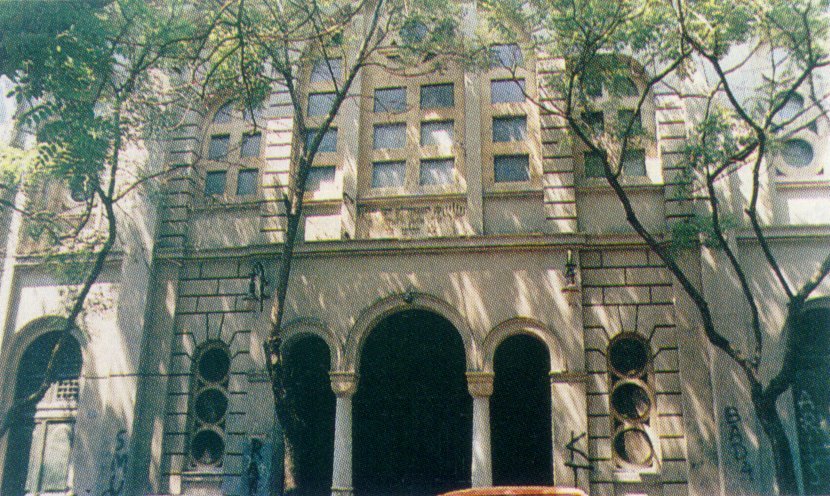 The Monastery Synagogue was founded with a donation from Inda Aroesti and was dedicated to the memory of her husband Isaac. The families that came from the Monastery and had settled in Thessaloniki after the Balkan wars (1912-13) and the First World War (1914-18) also contributed to its construction with donations. The foundation of the Synagogue of Monasteries took place in 1925 The works for its reconstruction lasted two years and its inauguration took place in 1927.
The Monastery Synagogue was founded with a donation from Inda Aroesti and was dedicated to the memory of her husband Isaac. The families that came from the Monastery and had settled in Thessaloniki after the Balkan wars (1912-13) and the First World War (1914-18) also contributed to its construction with donations. The foundation of the Synagogue of Monasteries took place in 1925 The works for its reconstruction lasted two years and its inauguration took place in 1927.
During the Nazi Occupation, the Monastery Synagogue was the center of the ghetto that was created in the center of Thessaloniki. When the entire Jewish population was deported to the death camps, the Monastery Synagogue was used by the Red Cross as a warehouse. For this reason it escaped destruction by the Nazis and was preserved in good condition.
Immediately after the liberation, in November 1944, the few Jews who had been saved by friendly Christian families or who had joined the National Resistance took refuge there. There they convened an assembly, elected the first post-occupation board of directors and proceeded to organize a rudimentary community life. Later, with the return of the few survivors from the death camps and the complete reconstitution of the Community, the Synagogue of Monasteries became the central Synagogue of Thessaloniki.
In June 1978, the Synagogue was seriously damaged by the great earthquake that hit our city and its operation was stopped until the delicate operations of its restoration were completed. Today it continues its operation serving the religious needs of the Jewish community of Thessaloniki.
Yad Lezikaron Synagogue:The Yad Lezikaron Synagogue, inaugurated in 1984 and open daily, is dedicated to the memory of the victims of the Holocaust. It was built on the site of the small "Burla" synagogue known as "Cal de la Plaza" (Synagogue of the Market), which had been operating since 1921 to serve the religious needs of the numerous Jews who worked in the adjacent market.
Saul Modiano Synagogue: There is also a small synagogue in the old age home Saul Modiano, for the religious needs of the elderly.
CULTURAL
Jewish Museum of Thessaloniki (www.jmth.gr)
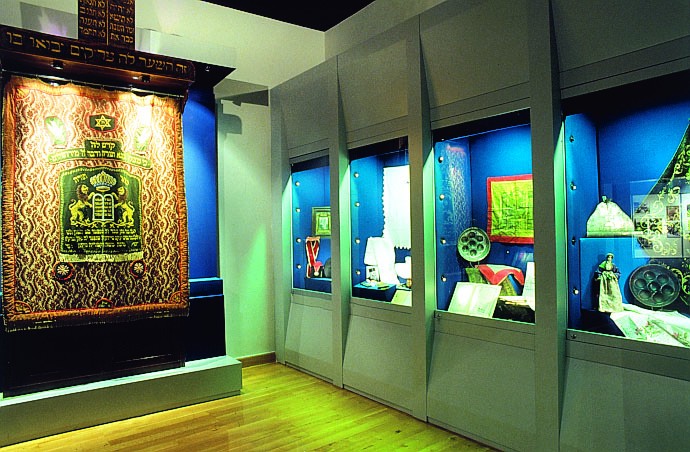 It operates in the listed building built in 1904 at 13 Agios Minas Street. This imposing building, in the area of the shopping center, was saved from the devastating fire of 1917 and at times housed the Bank of Athens and the offices of the French-language Jewish newspaper "L' Independent". In 1997, with the support of the Organization "Thessaloniki Cultural Capital of Europe", the building was renovated, taking its current form to house the Jewish Museum of Thessaloniki. The Museum exhibits religious and ritual objects, folklore material (dishes, costumes) and historical documents (newspapers, photographs and old publications). There is also a specialized library, a film and television archive, collections of Sephardic folk songs and stories from Holocaust survivors, salvaged archival material, plans and impressions of memorial buildings, synagogues, settlements and old maps. Finally, in the "SIMON MARKS" wing, copies of the exhibits of the permanent exhibition "Thessaloniki - Metropolis of Sephardism" operate on a permanent basis and contain detailed information on the history of Judaism and its areas of activity in Thessaloniki until the Holocaust. The Museum also offers organized museum-pedagogic activities.
It operates in the listed building built in 1904 at 13 Agios Minas Street. This imposing building, in the area of the shopping center, was saved from the devastating fire of 1917 and at times housed the Bank of Athens and the offices of the French-language Jewish newspaper "L' Independent". In 1997, with the support of the Organization "Thessaloniki Cultural Capital of Europe", the building was renovated, taking its current form to house the Jewish Museum of Thessaloniki. The Museum exhibits religious and ritual objects, folklore material (dishes, costumes) and historical documents (newspapers, photographs and old publications). There is also a specialized library, a film and television archive, collections of Sephardic folk songs and stories from Holocaust survivors, salvaged archival material, plans and impressions of memorial buildings, synagogues, settlements and old maps. Finally, in the "SIMON MARKS" wing, copies of the exhibits of the permanent exhibition "Thessaloniki - Metropolis of Sephardism" operate on a permanent basis and contain detailed information on the history of Judaism and its areas of activity in Thessaloniki until the Holocaust. The Museum also offers organized museum-pedagogic activities.
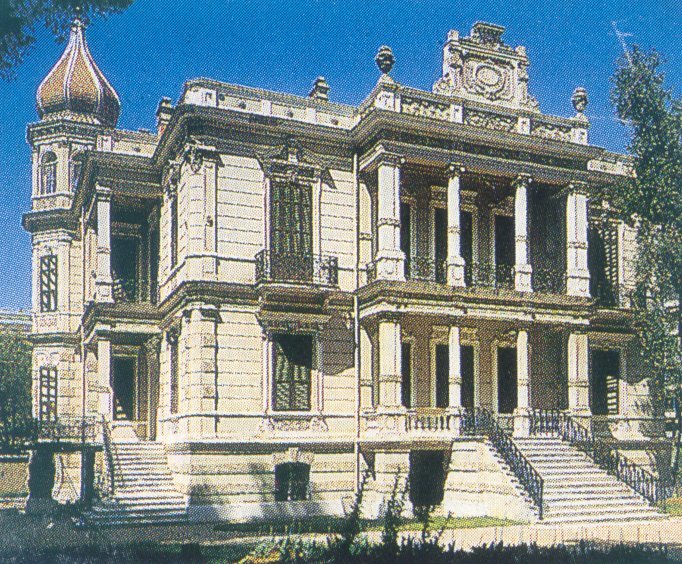 Hours of Operation: Tuesday, Friday, Sunday 11:00 – 14:00
Hours of Operation: Tuesday, Friday, Sunday 11:00 – 14:00
Wednesday, Thursday 11:00 – 14:00 & 17:00 - 20:00
Spanish-Jewish Language Center (Ladino Society)
In 1999, the Spanish-Hebrew language center of Thessaloniki was founded by the members of the cultural committee of I.K.Th.
The goals of this center are: (1) to contribute to the study and recording of the Spanish-Jewish language and culture and (2) to intensify the interest in the language both internationally, but also within our community, and especially among the new generation , in order to ensure its preservation as a living and integral part of our cultural identity. The activities of the center include the organization of events and conferences related to this language, the gathering of material and the promotion of new editions, the creation of a library, as well as teaching it to the young people of our community. In the years 1997, 2001, 2004 and 2008, international conferences on Spanish-Jewish Language were successfully organized with the participation of distinguished academics from all over the world.
Publications:
In recent years, the Community has sponsored a series of publications that refer to its history and tradition. These versions are:
1. “Agada Sel Pesach» edited by Baruch Sibi. She is trilingual (Greek, Hebrew and Spanish-Hebrew with Latin and Rashi characters).
2. «In memoriam» by M. Molho and I. Nehamas This is the story of the Holocaust of the Jews of Greece by the Nazis.
This work, written in French, was first published in the post-war years and has long been out of print. The Israelite Community of Thessaloniki undertook the re-edition in French, in the language of the original, and at the same time carried out its Greek translation, by Giorgos Zografakis.
3. "History of the Israelites of Thessaloniki" by I. Nehamas. The Israelite Community of Thessaloniki undertook the reprinting of the first five volumes, which had been published during the author's lifetime but had long been out of print. He also undertook the first edition of the last two volumes of this monumental work as well as its complete translation into Greek.
4. «Consulting Forum of The Jewish Community of Thessaloniki, Ir Wow Israel, Theft.1» This is the first volume of the cultural edition of I.K.Th. containing articles by reputable scholars on Thessaloniki and the Jewish Community.
5. «Judeo Español – The historical course of a tradition" Proceedings 1th of the International Conference of the Spanish-Jewish Language, held in Thessaloniki on October 19-20, 1997
6. «Judeo Español- A Jewish language in search of its people" Proceedings 2th of the International Conference of the Spanish-Jewish Language held in Thessaloniki on April 16-17, 2000
7. «Judeo Español – The social and cultural life in Thessaloniki through the Spanish-Jewish texts" Proceedings 3thof the International Conference of the Spanish-Jewish Language held in Thessaloniki on October 17-18, 2004.
Other publications financed or supported by the Israelite Community of Thessaloniki and the Etz Achaim Foundation are:
Memories of our fellow citizens from the death camps (Menashe, Natzari, Nahon, Yakoel, Handali, Strumsa), "The Synagogues of Thessaloniki" by Alberto Nar, "The proverbs of the Sephardim Jews of Greece" by Giorgos Zografakis, the translations of Psalms and the prayer book of the Day of Atonement (Yom Kippur) by Asher Moysis, the special edition of the magazine "Chronika" for the 2.300 years of Thessaloniki and the Ten-Year Calendar "A Book of Days" published by the Jewish Museum of Thessaloniki.
CONTACT
Synagogue of Monasteries, Syggrou 35 - 546 30 Thessaloniki, Tel: +302310 524968
Yad Lezikaron Synagogue, 26 Vasileos Heraklion - 546 24 Thessaloniki, Tel: +302310 223231
Spanish-Hebrew Language Center (Ladino Society), 26 Vasileos Heraklion - 546 24 Thessaloniki, Tel: +302310 239306
Jewish Museum of Thessaloniki, 13 Agios Minas - 546 24 Thessaloniki, Tel.: +302310 250406, Fax: +302310 250407, Email:
Community Offices, 26 Vasileos Heraklion - 546 24 Thessaloniki, Tel.: +302310 272840, 275701, 270256, Fax: +302310 229063, Email:
rabbinate, 26 Vasileos Heraklion - 546 24 Thessaloniki, Tel.: +302310 221124, e-mail:
Cemetery, Stavroupoli (opposite "AGNO" factory), Tel: +302310 655855
Jewish Primary School "Talmud Torah Agadol", Fleming 17 - 546 42 Thessaloniki, Tel.: +302310 830347, Email:
Saul Modiano Nursing Home, Kimonos Voga 83 - 546 45 Thessaloniki, Tel: +302310 848473, Email:
Cultural Center of Israelis of Thessaloniki, 26 Vasileos Herakleou Street - 546 24 Thessaloniki, Tel.: +302310 221030, +302310 275701, Email:
